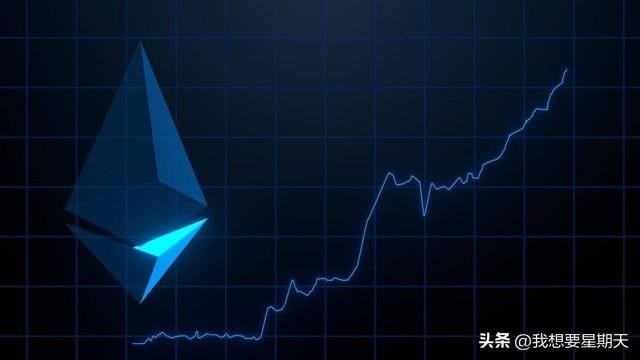Earlier this year, Ark Invest’s Cathie Wood shook up the cryptocurrency market with her prediction that the price of Bitcoin (CRYPTO: BTC) would reach $1.5 million by 2027. In April, Wood argued that the approval of the first exchange-traded funds (ETFs) based on the spot price of Bitcoin, more institutional buying, and the then-upcoming Bitcoin halving (which doubles the difficulty of mining the cryptocurrency) would attract a flood of investors to the world’s largest cryptocurrency market.
Wood also made some bullish predictions for Ethereum (CRYPTO: ETH), estimating that its market cap could exceed $20 trillion by 2032, which would imply a market price of more than $166,000 per Ethereum coin.
Recent updates and analysis have added new perspectives to Ethereum’s potential. The Bitcoin halving is complete, the first ETFs based on the Bitcoin spot price have been available since January, and the first Ethereum ETFs followed suit this week. So what happens next? Is Ethereum still a good investment option?
How is Ethereum different from Bitcoin?
Ethereum differs from Bitcoin in three important ways.
First, miners on the Bitcoin blockchain can mine Bitcoin tokens. Mining no longer exists on the Ethereum network, but developers can create their own tokens, decentralized applications (dApps), and non-fungible tokens (NFTs) based on Ethereum tokens. This flexibility has made Ethereum a core pillar of the Web3 movement, which aims to disrupt centralized application platforms such as Apple's App Store and Alphabet's Google Play with decentralized applications and payment methods.
Second, Ethereum requires much less electricity than Bitcoin. The Ethereum network previously used the same energy-consuming Proof-of-Work (PoW) mining method as Bitcoin, and the cryptocurrency was a popular alternative to high-end graphics cards among cryptocurrency mining enthusiasts. By September 2022, Ethereum transitioned to the more energy-efficient Proof-of-Stake (PoS) method. The shift reduced the network's total mining energy consumption by 99.95%. Ethereum bulls believe that this upgrade will make it easier to scale the Ethereum network and support more Web3 projects in the long term.
Third, and perhaps most importantly, Ethereum is able to execute so-called smart contracts. These digital contracts have agreements written directly into code. The Ethereum platform continuously checks all of its active contracts to see if the terms have been met, and if so, executes some code. This code can transfer ownership of physical or digital assets, move funds or cryptocurrency between different accounts, and more. This capability allows for the automation and decentralization of a wide variety of applications and processes.
What was the main catalyst for Ethereum?
Ethereum is now the world’s second-largest cryptocurrency after Bitcoin. It is also one of eight cryptocurrencies pre-approved by the New York State Department of Financial Services. This relative stability has led the Securities and Exchange Commission (SEC) to theoretically approve spot Ethereum ETFs, which were listed on the Chicago Board Options Exchange on Tuesday, July 23.
The SEC recently reiterated its view that Bitcoin is the only cryptocurrency that can be classified as a commodity rather than a security because it uses a PoW method, which makes it similar to physical gold mining. This is consistent with Bitcoin's original design document, which likened energy-consuming numerical computing systems to mining physical gold.
The SEC said that while the PoS method is more environmentally friendly, cryptocurrencies using this method are more akin to derivative contracts, making Ethereum more akin to a security than a commodity in the eyes of regulators.
Still, Ethereum’s regular destruction of its tokens could stabilize its price in the short term. The upcoming upgrade of the Ethereum network could also make it easier to facilitate financial transactions and develop more decentralized tokens and applications. More companies may also start accepting Ethereum coins as a payment option, and institutional investors could also accumulate more cryptocurrencies through easily accessible spot ETFs.
Market Update
Standard Chartered Bank has made a bold prediction for Ethereum.
Four months ago, the bank’s analysts claimed that if spot Ethereum ETFs are approved, Ethereum could reach $8,000 by the end of this year and $14,000 by 2025. At the end of May, Standard Chartered doubled its price target due to the expected large inflows into Ethereum that the approval of spot ETFs could bring. The bank estimates that spot ETFs could bring in 2.4 to 9.2 million ether inflows in the first year, equivalent to about $15 billion to $45 billion injected into the Ethereum ecosystem.
If Bitcoin hits $200,000 next year, as Standard Chartered predicts, the bank expects Ethereum could reach a price of around $14,000 during the same period.
Should you trust Wood and Standard Chartered's bullish forecast?
Investors should be cautious about Wood's $166,000 price target.
First, the famous growth investor has made plenty of bad calls in the past. Her firm’s Ark Innovation ETF (NYSEMKT:ARKK) is actually down 4% over the past five years, while the S&P 500 has risen 84%. Ark also offers its own Ethereum futures ETF and is trying to get approval for a spot Ethereum ETF, so Wood’s opinion is likely subjective.
That being said, Wood firmly believes that the expansion of Ethereum’s developer base and its potential to “replace many traditional financial services” and “take share from existing financial intermediaries” will drive its price towards her high target of 2032. Ethereum may not be anywhere near that high in eight years, but if the Ethereum Foundation continues to upgrade its network, it will certainly stabilize and move higher in the long term.
Whether you are a skeptic or an avid supporter, the future of Ethereum is a topic worth keeping a close eye on. This not-so-small cryptocurrency is on its way to success, and Ethereum looks like a no-brainer buy in the current market downturn.


#RecordMy2024#






